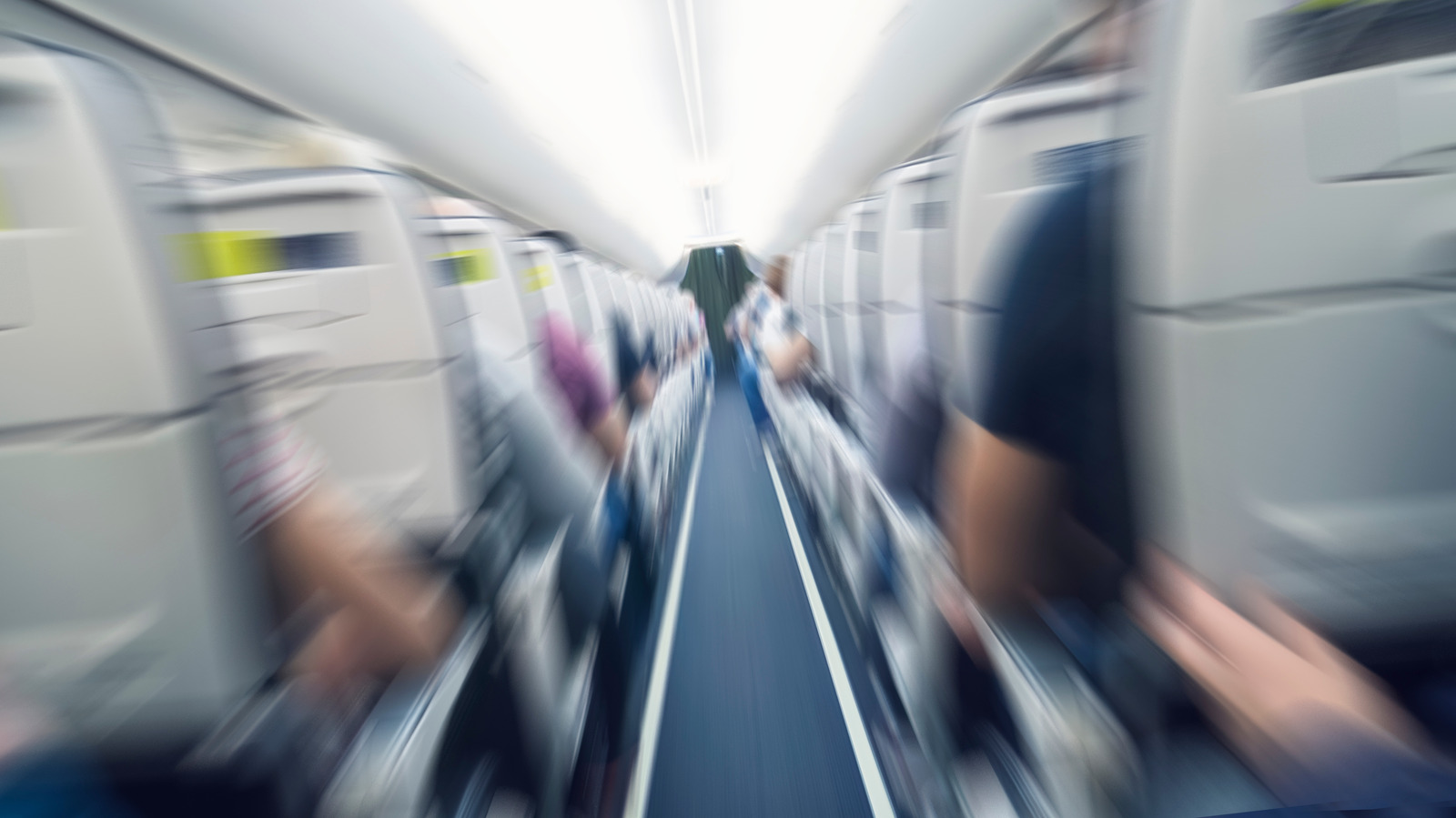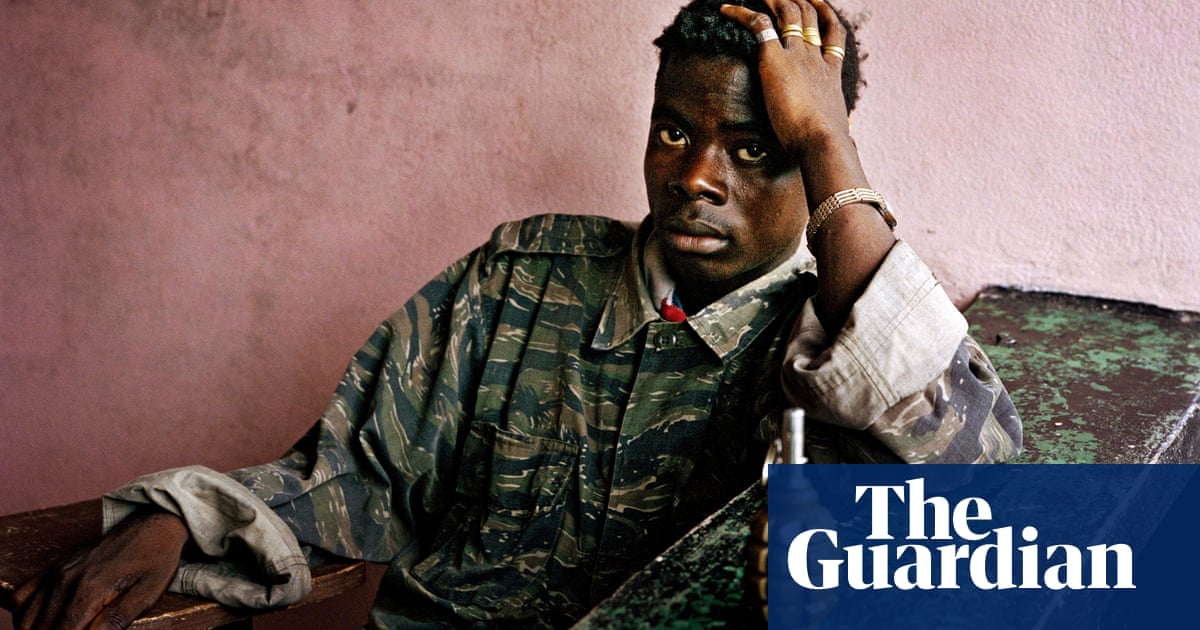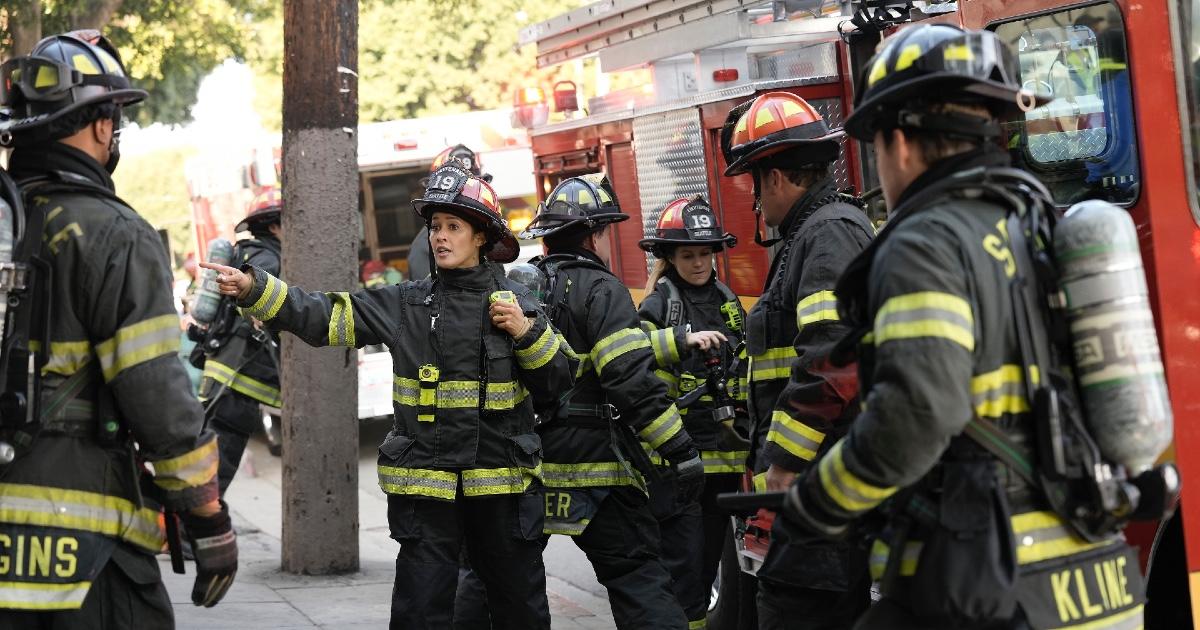
How To Survive A Plane Crash, According To Experts – Grunge
Airline flights take off and land safely every day, but they’re not the ones that make the news, are they? Those would be the flights that mysteriously disappear over open waters, turn into nothing more than floating debris, or a ball of fire. And let’s be honest — it’s that image that’s in the heads of countless passengers as they willingly go rocketing through the sky in a metal tube assembled by the lowest bidder. (Probably.)
Well, there’s some good news. In 2001, the U.S. National Transportation Safety Board published a report with the delightful title of “Survivability of Accidents Involving U.S. Air Carrier Operations, 1983-2000.” And it’s actually not terrible news: Around 95.7% of people involved in crashes survived, with many fatalities being caused by fires that happened once the plane was on the ground — and that’s actually super important. Also important is the fact that in the years since, air traffic has increased, but the fatality rate has remained about the same. Interestingly, a statistician from MIT crunched the numbers, and explained to ABC News: “If you take one flight a day, you would on average need to fly every day for 55,000 years before being involved in a fatal crash.”
Part of the reason for the NTSB study was to make passengers aware of the fact that they can survive if they know what to do if a crash happens. So, let’s talk about what the experts advise.
Stow those tray tables
 diy13/Shutterstock
diy13/Shutterstock
When Airbus compiled the statistics of exactly when most airplane accidents happened, it was pretty telling. Overwhelmingly, the riskiest times were takeoff (which is officially defined as the Go-Go-Gadget race down the runway to when the plane leaves the tarmac, before the “initial climb” phase), the approach phase, and the landing phase. Frequent flyers will recognize these times as the times when the flight staff become downright tyrannical about things like having tray tables stowed and seats upright. There’s a good reason for all that, which is that it might just save lives.
First, those upright seats. A spokesperson for the Civil Aviation Authority explained to the Independent that seats need to be upright in order for people to assume the proper brace position should something go wrong. Easy enough, right?
Now, the tray tables — and this is actually twofold. Travel + Leisure talked to former flight attendant Kelly Kincaid, who told them that not only does having the tray tables up clear the way if people need to get off the plane quickly (and moving seats into an upright position also helps with this), but it also forces them to get rid of anything that could fly around the cabin during a crash. Don’t want to get hit in the head with a laptop? Get rid of the tray tables.
Make sure the blinds are up
 Jag_cz/Getty Images
Jag_cz/Getty Images
Sure, there’s almost no better way to spend a flight than tucked away in the deep, deep, darkness of sleep, but that can be tough with the blinds up. Still, experts say that they should be up — especially during takeoff and landing.
There are actually a few reasons for that, starting with what pilot Chris Cooke had to say about it (via The Independent). When blinds are up, it allows in natural light. That’s important in case the cabin’s lights go out, and it’s also important to make sure passengers’ eyes can adjust to whatever the light levels outside are, should they have to evacuate quickly. When speed is of the essence, there’s no time to stop at the top of an emergency slide and blink the world into focus.
Also, as the Flight Safety Foundation told Conde Nast Traveler, “flight attendants or passengers need to be able to see outside to determine whether it’s safe to open and use an emergency exit. You don’t want to send someone out an over-wing exit if the engine on that side is still running or on fire.” And it turns out, that goes both ways. A news briefing from Schiphol airport pulls back the curtain a little more, too: Open blinds mean that on-the-ground emergency services can see what’s happening inside and exactly where they’re needed.
Choose the right seat
 andriano.cz/Shutterstock
andriano.cz/Shutterstock
There’s a lot of debate on whether or not there’s a safer place to be sitting in the case of a plane crash, and there are plenty of places — including Boeing and the Federal Aviation Administration — who will say it’s pretty much all the same, mostly because of the variation in possibilities when it comes to how the plane crashes. Popular Mechanics disagrees, though, and in 2007, they spent a huge chunk of time compiling data and analyzing 36 years’ worth of records from the National Transportation Safety Board. The findings were telling.
In a nutshell, they found that if you want to have the highest chance of survival, sit in the back. Sitting in the back might mean it takes longer for you to disembark on normal flights, but it’s also been found to increase chances of survival by as much as 40%.
A few years later, Time did a similar investigation with FAA records. They got even more specific, saying the seats with the highest chance of survival were the rear middle seats. There, passengers involved in a crash had a 72% chance of making it out alive. Turns out there’s an advantage to being sandwiched in the middle seat after all.
The brace position makes a difference
 SeventyFour/Shutterstock
SeventyFour/Shutterstock
There’s a bit of internet wisdom that makes the rounds every so often, and that’s the idea that the brace position that passengers are instructed to assume in case of a plane crash is actually meant to kill said passengers instead of save them. According to versions of the claim compiled by Snopes, the brace position is rumored to spare passengers the pain and suffering of a prolonged death by snapping necks on impact, while keeping the crash site as neat as possible to make it easier to recover and ID bodies. Only, that’s not the case.
When they looked at the outcomes of crashes going all the way back to 1989, they found that overwhelmingly, the brace position has helped people to survive. The idea is, in a nutshell, that if you’re already leaning against the seat in front of you or your knees, you’re not going to hit something face-first at high speed. It’ll also help reduce the chances that flailing limbs will hit those around you and that you’ll get hit by loose objects — and it’s been shown to work.
In addition to survivor stories, there’s been plenty of testing. BBC Earth Lab reported on some of those tests, which showed the brace position increased not only the chances of surviving the impact but the chances of remaining conscious and able to evacuate under your own power.
Pay attention to the safety demo
 Quality Stock Arts/Shutterstock
Quality Stock Arts/Shutterstock
Jack Plaxe is a risk-management expert with Louisville’s Security Consulting Alliance, and he says (via The Washington Post), “After meeting air-crash survivors and families who lost loved ones in disasters, I learned that safety is critical to survival and that the flight attendant’s safety briefing is the first step to prepare for the flight.” In other words? Listen to the safety demonstration, as it just might give you the tools you need to survive.
And that’s true even for passengers who have flown more times than they can count. Ignoring the demos is pretty standard these days, and the good news is that research from the School of Aviation at UNSW found (via Flight Safety Australia) that the relatively new trend of giving safety videos a fun, comedic, or eye-catching overhaul has worked … to a point.
Research has also been done into what happens to a person during a crash. Heightened stress and panic are completely understandable, but it also means that most people aren’t really in a state of mind to listen to and obey instructions shouted at them in the moment — if they can even hear them. Listening while you’re calm does make a difference, and while it all seems like pretty straightforward information that everyone knows by now, that’s not the case — and proof was shared on Twitter by one flight attendant in 2018. In a photo of the cabin during an emergency landing, every single person in that photo was wearing their mask wrong.
Read the safety card
 Iryna Mylinska/Shutterstock
Iryna Mylinska/Shutterstock
For those who don’t read the safety card tucked into the pockets of every airline seat, you’re not alone. Former American Airlines captain Clyde Romero explained his experiences to The Washington Post: “I’ve always said you could put a free-flight coupon stapled to the passenger safety card that’s in the seat back pocket in front of every passenger, and after every flight, all of the free-flight coupons would still be there.”
It turns out, though, that not reading that pamphlet can be a deadly mistake. But the good news? Taking a few minutes to review the information can save lives. When Ethiopian Airlines Flight 961 was hijacked and crashed in 1996, only 50 of the 175 passengers survived. Why? Because they’d read the safety card, and knew how to properly use the life vests.
The safety cards are such a big deal that FAA regulations dictate what information has to be there, and they’re created in an extensive process of design, testing, and more testing, in order to be sure they’re easily understandable by at least 90% of test groups (via Aerotime Hub).
Make smart clothing choices
 Gorodenkoff/Shutterstock
Gorodenkoff/Shutterstock
Dressing for a flight of any length should involve the comfort of not only the passenger but everyone around them, too. (That means ditching things like massive coats and please, don’t bathe in perfume or cologne.) But clothing can also make a big difference in how well someone fares in case of a plane crash.
How? The obvious thing is footwear. Skip sandals, high heels, and other shoes that can get caught on debris or fall off easily. You don’t want to be stuck in place by your footwear, but you do want to be able to run if you need to.
Now, what about clothing? USA Today Travel Tips found that the safest options are layers that include long sleeves and full pants. It might seem odd, but having that layer of coverage can buy you some serious time and help prevent the kind of burns there’s just no coming back from. And, on that note, opt for natural fibers: They’ll burn away, instead of melting to your skin. And those layers aren’t just for comfort. Sure, you can bundle up or strip down as the cabin heats up or cools down with the changes in altitude, but in case of a crash, breathing through that extra sweater just might be enough to help you struggle through potentially deadly smoke and fumes.
Rethink alcohol and sleep aids
 Alvaro Alonso Garcia/Shutterstock
Alvaro Alonso Garcia/Shutterstock
Plane crashes can be studied and researched from the safety of a lab, and crash test dummies can simulate what happens in some circumstances, but real life is rarely as neat as it might seem when it’s reconstructed in artificial environments. The real experts are the survivors themselves, and after Dayaram Tamrakar survived a plane crash in 2018, he spoke to the Associated Press (via The Seattle Times) to share just how he had escaped the deadly accident that claimed the lives of 49 people.
The key thing that led to his survival was skipping two things that countless people rely on to get them through the cramped, claustrophobic experience of flying: Alcohol and sleep aids.
“I was able to grab onto my seat during the crash, quickly release seat belts, spring up from the seat, and have the sense to force open the emergency door because I was alert,” he shared. He was so on top of his game that he helped others evacuate before finally fleeing ahead of a raging fire that swept through the wreckage and burned the bodies of many beyond recognition. Had he opted for a few drinks or taken a few sleeping pills to get through the flight, he might not have been able to react with the clear-headed thinking that saved not only his own life but the lives of others. Scars, however, run deep: “I am just thankful that I am alive, although some of my friends did not make it alive,” he added.
Forget about the luggage
 Blue Planet Studio/Shutterstock
Blue Planet Studio/Shutterstock
One of the worst parts of a flight is sitting at the gate, waiting for everyone to gather their luggage so the rest of the plane can just get off already. It takes a long time, right? So it makes sense that in the midst of an emergency, everyone should just ditch their luggage and get the heck off the plane ASAP … right?
In 2019, The New York Times reported on a jet that crash-landed at Russia’s Sheremetyevo airport. After initial reports suggested that all was fine, it ultimately turned out that 41 people had been killed, in part due to a slow evacuation caused by people who took the time to collect their luggage before getting off the plane. That’s in spite of the cabin crew’s repeated instructions to leave everything behind: The mad scramble for luggage created a traffic jam of people trying to evacuate, and most of the deaths were people who were trapped behind them.
That’s not the only time it’s happened; U.K. Flight Safety Committee exec Dai Whittingham summed things up for The Independent: “When passengers decide to take their carry-on bags with them it places other passengers at severe risk. There have been fatal accidents where investigators have found bodies near to open exits, the individuals having been overcome by fumes from a post-crash fire just seconds away from escaping. … The stark reality of your choice is that you believe your baggage is worth more than the lives of the people behind you.”
Seat belts? It’s complicated
 Quality Stock Arts/Shutterstock
Quality Stock Arts/Shutterstock
The idea that a seat belt is going to help save your life when you’re in a plane crash does, understandably, sound a bit farfetched. In fact, research from the Marmara University Faculty of Medicine was published in World Neurosurgery, and focused on the case of a 21-year-old who required surgery after being in a plane crash and suffering fractures related to the seat belt she was wearing at the time. But here’s the thing: Wearing your seat belt before the crash can make a huge difference in just how you’re feeling when the plane finally comes to a halt.
The Telegraph spoke with author and flight attendant Heather Poole, who explained the importance of buckling up when the fasten seatbelt sign comes on. “People think they’re lifted up in the air during turbulence. The truth is the plane drops,” she explained. “It comes down hard and it comes down fast and that’s how passengers get injured — by getting hit on the head by an airplane.”
And that’s where seat belts can play a major role in walking away from a plane crash. It’s not so much the landing, but what happens before: There have been plenty of documented cases of concussions, head injuries, and broken bones sustained during instances of air turbulence, and avoiding those injuries in the lead-up to the crash will make passengers much more capable of doing what needs to be done to save lives on the ground.
Life vests? They’re complicated
 Svitlana Hulko/Shutterstock
Svitlana Hulko/Shutterstock
It might seem like a logical thing to do when involved in a plane crash around water would be to grab the life jacket from under the seat before heading out. But, when The Wall Street Journal took a look at just how useful life jackets actually are, they found some conflicting information. Take, for example, U.S. Airways Flight 1549. That’s the flight that ended up in the Hudson River, and of the 150 passengers, only four were able to both find and correctly put on a life jacket.
That’s not the only time life jackets have been problematic, either: Take the events surrounding the crash landing of Ethiopian Airlines Flight 767. After crashing in the Indian Ocean in 1996, 123 people were killed. According to reports via CNN, most of the fatalities were from drowning. Passengers managed to get their life jackets on, but when most inflated them inside the plane, they were trapped.
So, what should you do? For starters, never, ever, ever inflate a life jacket while still inside. And secondly, if you have a choice between staying behind to search for a life jacket and getting out of the plane, choose evacuation. That’s according to FAA principal cabin safety investigator Cynthia McLean, who explained: “We want [passengers] out as quickly as they can get out.”
Know some basic first aid
 Kesu01/Getty Images
Kesu01/Getty Images
Dynamic Advanced Training is a Dubai-based organization that teaches survival skills, and Emergency Trainer Hasan Iqbam sums up the possibility of surviving a plane crash like this (via EuroNews): “The common misconception about plane crashes, as Hollywood depicts, is that everybody died. But that’s not always the case. Crashes are survivable.”
Fortunately, there are some things that can be done well in advance of actually being in a terrifying crash situation that’ll help in the long run. First and foremost is one that’s never a bad idea, even for people who don’t plan on flying: Learn basic first aid. Taking classes in first aid training teaches skills that can mean the difference between life and death in a plane crash, including things like setting splints, treating burns, stopping life-threatening bleeding, recognizing the signs of concussions, and knowing what to do if someone is showing signs of severe head or internal injuries.
And it’s not only important for practical, obvious reasons. Having that kind of knowledge in your back pocket will do a lot to instill a sense of agency and an attitude that says yes, you can survive this — and hopefully, you can help people along the way.


























































